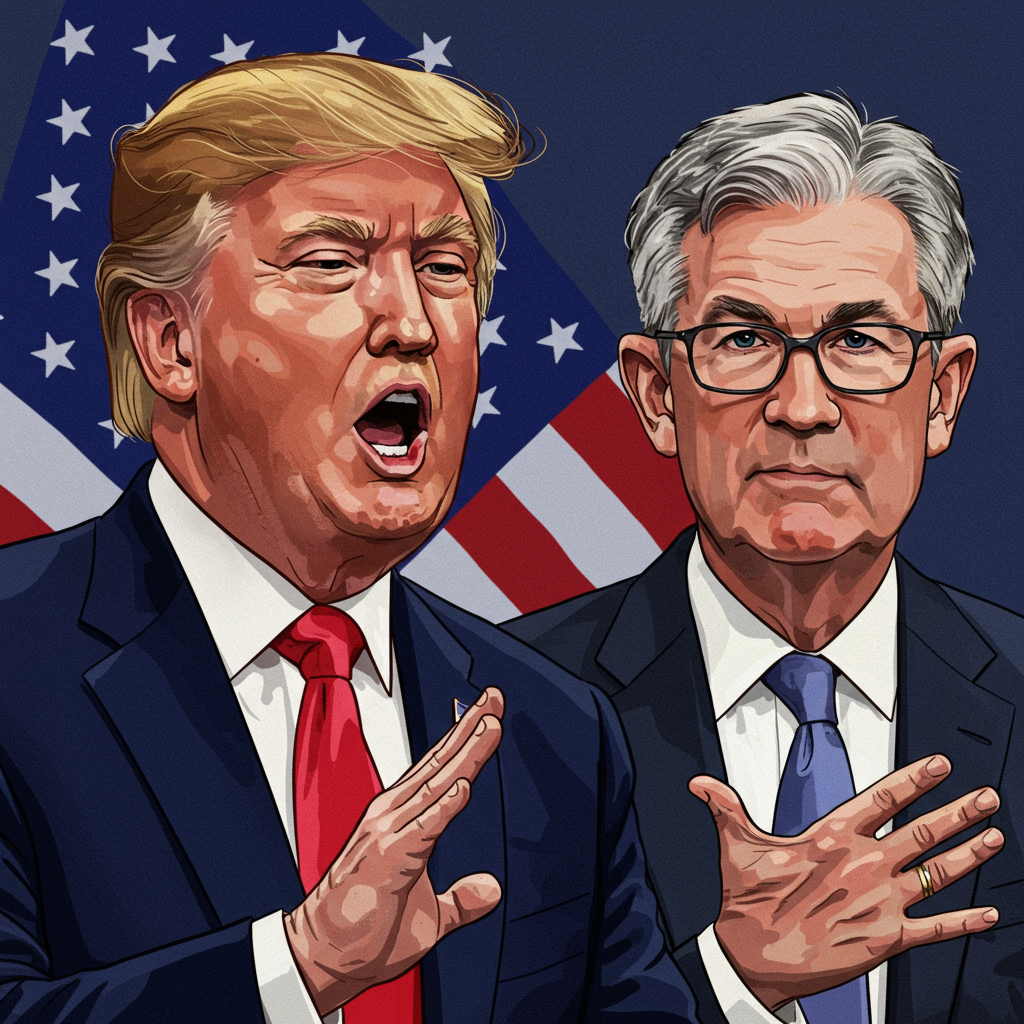Reports are circulating on Wall Street that President Trump is again considering a move that could significantly shake up the Federal Reserve and rattle markets. At the center of investor apprehension is the potential for Trump to announce his preferred candidate to replace Fed Chair Jerome Powell well before Powell’s term concludes in May 2026. This action could effectively create a “shadow Fed chair,” a scenario that analysts and market participants view with considerable unease.
The “Shadow Fed Chair” Concept Explained
The idea of a “shadow Fed chair” involves the president publicly naming a successor to the current Federal Reserve Chair long before the incumbent’s term expires. This nominated individual, presumably aligned with the president’s monetary policy preferences, could potentially exert influence over market expectations and even the behavior of the central bank itself, despite the current chair still being in office.
Experts warn that this creates a confusing and potentially unstable dynamic, akin to having “two people trying to steer the ship.” It risks undermining the authority of the sitting chair and sending mixed signals about the future direction of monetary policy, a situation that could lead to a “cacophony” of conflicting messages for investors to decipher over potentially a year or more.
Market Reactions Signal Apprehension
Investors are already demonstrating their sensitivity to this possibility. Reports of Trump reviving the idea of an early announcement have coincided with observable market shifts. The U.S. dollar has softened, while U.S. Treasury bonds have seen increased buying pressure, pushing yields lower in a flight-to-safety move for some assets.
Specific market maneuvers highlight the anticipation of future policy shifts. Rates traders, particularly in futures markets tied to the Secured Overnight Financing Rate (SOFR), are reportedly placing record bets that significant interest rate cuts will occur immediately after Jerome Powell’s term ends, under the leadership of a Trump-appointed successor. This activity, especially around the June 2026 futures contracts, indicates a strong expectation of a more dovish monetary policy ahead.
However, the broader market reaction to the threat of a “shadow Fed chair” or early removal is seen as overwhelmingly negative. Some analysts predict “violent reactions in markets,” including further declines in equities like the S&P 500, potentially pushing it significantly lower. The dollar, already under pressure, is expected to weaken further, and bond yields could ultimately rise due to increased inflation expectations and a higher “term premium” investors demand for uncertainty. This fear has even triggered rare instances of simultaneous selling pressure across US stocks, bonds, and the dollar – a worrying “sell America” trade reminiscent of past crises.
Trump’s Motivation: A Push for Lower Rates
President Trump has openly and repeatedly criticized Chair Powell and the Federal Reserve’s approach to interest rates. Expressing frustration over what he perceives as Powell’s cautious stance, particularly regarding rate cuts, Trump has publicly stated his desire for significantly lower borrowing costs to stimulate the economy. He has even referred to Powell as “terrible” and suggested his departure “cannot come fast enough,” arguing that the Fed’s policy hinders economic growth and could worsen the impact of trade tensions.
This pressure is seen by many as the primary driver behind the consideration of an early successor announcement. The expectation is that a Trump appointee would be more sympathetic to aggressive rate cuts, potentially leading to a swifter easing cycle than the current Fed leadership seems inclined towards.
The Critical Importance of Fed Independence
At the heart of investor anxiety is the potential damage to the Federal Reserve’s perceived independence. An independent central bank is widely considered crucial for maintaining market confidence, ensuring predictable monetary policy, and effectively managing inflation without political interference. This independence is seen as a cornerstone of the U.S. financial system’s credibility, both domestically and globally.
Undermining this independence, whether through public attacks, exploring legal avenues for removal, or creating a “shadow Fed chair,” could have profound consequences. It could erode trust among investors worldwide, particularly those holding trillions in U.S. assets like Treasuries, who rely on the Fed’s stability. Such actions could weaken the U.S. dollar’s status as the world’s primary reserve currency and introduce significant unpredictability into financial markets.
While legally firing a Fed Chair is complex and requires “for cause” removal, not just policy disagreement, the administration has reportedly studied the possibility. Even without outright removal, the threat alone, amplified by the potential for a “shadow” figure waiting in the wings, causes deep unease.
Navigating the Uncertainty
Given the potential for volatility, market watchers advise investors to remain strategic. While the Federal Open Market Committee (FOMC) as a whole sets monetary policy, the Chair holds significant influence, making the succession process critical. Potential candidates mentioned include White House economic adviser Kevin Hassett, former Fed Governor Kevin Warsh, Judy Shelton, Treasury Secretary Scott Bessent, and current Fed Governor Christopher Waller.
For investors, the current climate underscores the value of diversification, particularly across international assets, and maintaining a long-term perspective rather than reacting impulsively to headlines. Monitoring inflation expectations is also key, as threats to Fed independence could heighten concerns about future price stability. While markets have endured past shocks, the prospect of political interference in monetary policy presents a structural challenge that tests the credibility of U.S. economic institutions.



